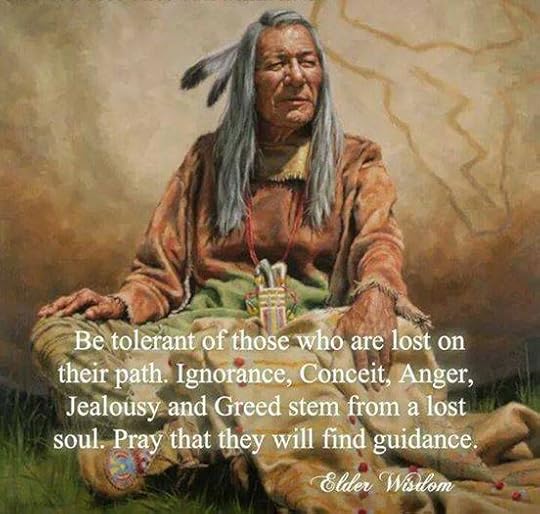John R. Fultz's Blog, page 55
January 15, 2015
TALL EAGLE comes to RAGNAROK
 I’m so excited to announce that my next novel, THE TESTAMENT OF TALL EAGLE, will be released by Ragnarok Publications later this year.
I’m so excited to announce that my next novel, THE TESTAMENT OF TALL EAGLE, will be released by Ragnarok Publications later this year.
Joining the Ragnarok family is a true pleasure for me. They are one of the fastest-growing and most intriguing of today’s indie publishers. They make fantastic books and they have a growing stable of stellar talent such as Kenny Soward, Django Wexler, Alex Bledsoe, Tara Cardinal, Rob Hayes, Seth Skorkowsky, Mercedes M. Yardley, and more.
(Hit up their website for a complete list of authors and books.)
TALL EAGLE is what I call a Tribal Fantasy. It’s a tale of high adventure born in the mysteries of pre-colonial North America. The protagonist is a young Native American fighting to lead his people from the jaws of extinction to a new life in the Land Beyond the Sun. To greatly simplify the story, it’s a bit like LAST OF THE MOHICANS meets LORD OF THE RINGS.
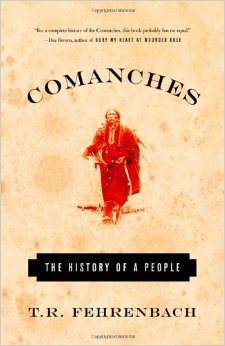 While most traditional fantasies evolve from pseudo-medieval European concepts, this one grew directly from North American history. It takes place somewhere around the year 1700, about twenty years after the “great horse dispersal.” My initial inspiration for THE TESTAMENT OF TALL EAGLE was a terrific non-fiction book by historian T.R. Fehrenbach called COMANCHES: THE HISTORY OF A PEOPLE. The extensive research in this book is fascinating, evocative, and like nothing else I have experienced. Reading it in between the writing of SEVEN PRINCES and SEVEN KINGS inspired me greatly. That raw enthusiasm gave birth to a new fantasy epic that sprouted directly from the soil of history.
While most traditional fantasies evolve from pseudo-medieval European concepts, this one grew directly from North American history. It takes place somewhere around the year 1700, about twenty years after the “great horse dispersal.” My initial inspiration for THE TESTAMENT OF TALL EAGLE was a terrific non-fiction book by historian T.R. Fehrenbach called COMANCHES: THE HISTORY OF A PEOPLE. The extensive research in this book is fascinating, evocative, and like nothing else I have experienced. Reading it in between the writing of SEVEN PRINCES and SEVEN KINGS inspired me greatly. That raw enthusiasm gave birth to a new fantasy epic that sprouted directly from the soil of history.
TALL EAGLE‘s people are NOT Comanches, but they are loosely based on earlier tribes whose migration created the Comanches (who discovered horse power and became masters of the Great Plains in the 1700s). At this time in history the Amerindian peoples were confronted with aggressive and overwhelming European cultures … but what if one of those lost tribes was exposed to a culture of the fantastic? And what if that changed EVERYTHING for those people? That was the seed that grew into THE TESTAMENT OF TALL EAGLE.
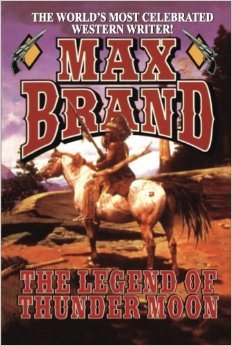 Another influence I’m proud to acknowledge was Max Brand’s classic THUNDER MOON series. These were pulp tales written during the heyday of pulp fiction, featuring a white youth raised by the Cheyenne. The THUNDER MOON stories pack a powerful punch of old-west adventure, but they also reflect the dignity and wisdom of the traditional Cheyenne way of life. The author obviously did his research, and despite the white protagonist these books showcase a keen understanding of the Great Plains cultures.
Another influence I’m proud to acknowledge was Max Brand’s classic THUNDER MOON series. These were pulp tales written during the heyday of pulp fiction, featuring a white youth raised by the Cheyenne. The THUNDER MOON stories pack a powerful punch of old-west adventure, but they also reflect the dignity and wisdom of the traditional Cheyenne way of life. The author obviously did his research, and despite the white protagonist these books showcase a keen understanding of the Great Plains cultures.
The old story of the “white man adopted by natives” has been used time and time again in fiction and movies–from A MAN CALLED HORSE to LITTLE BIG MAN to DANCES WITH WOLVES—it’s a well-explored myth. However, I didn’t want to tell that same old story, so my protagonist is a full-blooded member of his tribe. He embodies the culture, philosophy, and spirit of the ancient Amerindians, who inhabited a pristine magical world long before European invaders took it away from them.
TALL EAGLE is not meant to recreate history, but to inject it with traditionally fantastic elements. On that note we have monsters, giant eagles, and alien races all showing up. It’s also a coming-of-age story, a romance, and a tale of primal adventure.
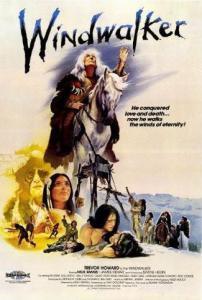 Another huge inspiration for me was the 1980 film WINDWALKER, a forgotten classic starring Trevor Howard and James Remar. I saw this movie when I was 11 years old and I never forgot this powerful story of love, family, and survival.
Another huge inspiration for me was the 1980 film WINDWALKER, a forgotten classic starring Trevor Howard and James Remar. I saw this movie when I was 11 years old and I never forgot this powerful story of love, family, and survival.
WINDWALKER features very little English, as the languages of the Crow and Cheyenne are spoken for most of the movie, supported by English subtitles. It has always been one of my favorite films, a timeless story of prehistoric North America.
We’re currently working on the TALL EAGLE cover art, and I’ll be showing it here as soon as it’s ready. Needless to say, this is NOT your typical fantasy novel, and I’m so grateful to find a publisher unafraid to take a chance on something unusual. Fantasy enthusiasts will not be disappointed.
THE TESTAMENT OF TALL EAGLE is set for a late June release.
More info here as news develops…


January 11, 2015
Long Live the King
“I don’t know why I do this. I’m not qualified to analyze it, but I love doing it.
It seems to me that the world is full of people;
I have to draw those people.”
–Jack “King” Kirby, 1974
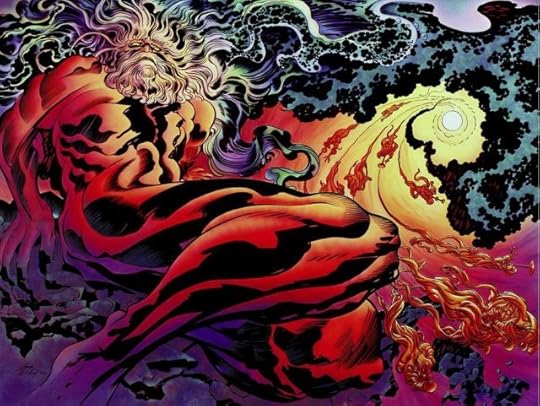
This cosmic Jack Kirby piece is entitled simply enough, “God.”
December 5, 2014
GOMER PYLE’s “Mimesis”
 SWEET. I’m enjoying an amazing album for the first time. It’s “Idiots Savants” by GOMER PYLE. There’s no other word for this album–and this song–and this video–than “awesome”–which doesn’t even begin to describe their heavy psychedelic greatness. But don’t take my word for it, take a trip on the cosmic-thought sonic wavebeam yourself, i.e. watch the video for “Mimesis,” the second song on the album.
SWEET. I’m enjoying an amazing album for the first time. It’s “Idiots Savants” by GOMER PYLE. There’s no other word for this album–and this song–and this video–than “awesome”–which doesn’t even begin to describe their heavy psychedelic greatness. But don’t take my word for it, take a trip on the cosmic-thought sonic wavebeam yourself, i.e. watch the video for “Mimesis,” the second song on the album.

November 30, 2014
Cosmic Headtrip: AVATARS OF WIZARDRY
 More often than not the best art comes from the indie side of any field. Case-in-point: AVATARS OF WIZARDRY from P’rea Press. It is one of the best works of pure dark fantasy I’ve read in a long time.
More often than not the best art comes from the indie side of any field. Case-in-point: AVATARS OF WIZARDRY from P’rea Press. It is one of the best works of pure dark fantasy I’ve read in a long time.
This superb collection of poems inspired by the work Clark Ashton Smith and his mentor George Sterling offers one fantastic, phantasmal head trip after another, transcendental goth romanticism with shades of cosmic sword-and-sorcery.
Now I’m not usually someone who seeks out poetry. I teach it often, but fantastic poetry is something of a rarity in academic texts. Reading this collection (with some Pink Floyd, Kyuss, or Monster Magnet rumbling softly in the background for good measure) takes me right back to the “wonder years” of my early reading life.
From the ages of 9 to 12 I discovered the amazing fiction of Edgar Rice Burroughs, J.R.R. Tolkien, Robert E. Howard, Clark Ashton Smith, and other great fantasists. Reading AVATARS OF WIZARDRY sends me back to those days when fantasy was still dangerous, mysterious, and full of strange wonders.
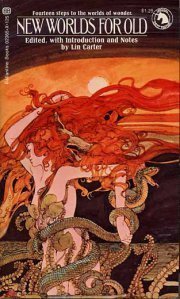
I first discovered CAS’s “The Hashish Eater, or The Apocalypse of Evil” in Lin Carter’s legendary NEW WORLDS FOR OLD collection. The same volume that introduced me to the amazing godfather of modern fantasy, Lord Dunsany. Oh, this was a good one…
One of Smith’s greatest poems “The Hashish Eater, or The Apocalypse of Evil” was inspired by George Sterling’s “A Wine of Wizardry.” Both of these poems are celestial odysseys of fantasy perfection. They begin AVATARS OF WIZARDRY back-to-back and are followed by eight poems from more contemporary writers: Alan Gullette, Wade German, Michael Fantina, Richard L. Tierney, Liegh Blackmore, Bruce Boston, Earl Livings, and Kyla Lee Ward. The result is an epic fantasy experience like none other. The words “psychedelic” and “phantasmagorical” are barely enough to describe it.
These poems aren’t for the shallow-minded 160-character world that we live in today. Each one is an epic adventure beyond space and time, directly into the center of eternal imagination, rife with cosmic transcendence. This is spirit-freeing fantasy in the best sense of the word, literary escapism as psychological catharsis. It’s some of the best damn poetry I’ve ever read, which makes it some of the best fantasy I’ve ever read, period.
You don’t have to be a poetry expert (or fan) to take this cosmic ride. Just get yourself a copy before they’re all gone.

November 27, 2014
Elder Wisdom
November 23, 2014
“Wizard in Black”
Someone had the terrific idea of making a video for “Wizard in Black”
by English Doom-Rockers ELECTRIC WIZARD, using clips from
Ralph Bakshi’s classic film WIZARDS (1977). A perfect match. Crank it up.

November 16, 2014
The Perils of “Editorial Vision”
Usually it’s because they have a conception, a personal vision, something they want to say—and the best way they can say it is through the crafting of stories. Most writers tend to write in both short and long formats (i.e. short stories AND novels). In fact, these days if you don’t write in both formats you’re missing a large segment of the audience.
Why do editors edit?
Every publication needs a good editor with a strong sense of what is “good writing” and what isn’t. But there’s more to it than that. More often than not, editors publish stories that meet their specific “editorial vision.” This explains why writers often get rejections that read like this: “Good story, good writing, but it does not fit our needs at this time.” The subtext is: “You’re good, but not MY publication’s definition of good.”
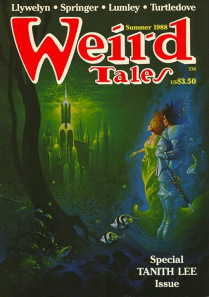 There is often a vast discrepancy between a writer’s vision and that of the editor who is considering his/her story for publication. Editors are loathe to publish a story that does not fit their personal “editorial vision” for their magazine/web site/anthology. Of course editors are entitled to this specific concept—after all, it’s their job to serve the publication. If THEY don’t know what they’re looking for, nobody does.
There is often a vast discrepancy between a writer’s vision and that of the editor who is considering his/her story for publication. Editors are loathe to publish a story that does not fit their personal “editorial vision” for their magazine/web site/anthology. Of course editors are entitled to this specific concept—after all, it’s their job to serve the publication. If THEY don’t know what they’re looking for, nobody does.
Some writers will tailor their writing to fit a specific venue’s editorial vision. To do so (i.e. to give the editor what the editor wants) is the fastest and surest way to get published. Writers need sales, and altering one’s personal vision to correspond more closely with that of a specific editor/publication is part of the game.
 Yet, what about the writers and the stories that DON’T fit into anyone’s vision but their own? What happens when editors are overly beholden to their own specific vision—which by the way is usually 90% defined by personal taste? The editor, today more than ever, is likely to also be the publisher. Hence the entire look, feel, and mentality of the publication stems from the editor’s personal taste and sense of aesthetics. In fact, half of an editor’s job is to “weed out” those submissions that do NOT fit his/her vision (or the vision of the particular venue for which he/she is editing). We get it.
Yet, what about the writers and the stories that DON’T fit into anyone’s vision but their own? What happens when editors are overly beholden to their own specific vision—which by the way is usually 90% defined by personal taste? The editor, today more than ever, is likely to also be the publisher. Hence the entire look, feel, and mentality of the publication stems from the editor’s personal taste and sense of aesthetics. In fact, half of an editor’s job is to “weed out” those submissions that do NOT fit his/her vision (or the vision of the particular venue for which he/she is editing). We get it.
But what about the WRITER’s vision?
Which is more important: Writing to “fill a slot” or writing to explore one’s own literary fascinations and sense of personal aesthetics? Should a writer only write stories that will “sell” because they meet somebody else’s sense of what is good/proper/interesting? Well, if the writer’s foremost concern is SELLING STORIES, the answer is YES. You’d better write what the Editors want, because they’re the ones cutting you a check when they accept your story. But nobody is making a living from writing short stories these days. It ain’t the 1930s anymore.
 So the question arises: What should a writer’s foremost concern be? Fulfilling the demands of a market (commercial concerns) or following his/her own inner vision to its ultimate conclusion (artistic concerns)?
So the question arises: What should a writer’s foremost concern be? Fulfilling the demands of a market (commercial concerns) or following his/her own inner vision to its ultimate conclusion (artistic concerns)?
Perhaps an even more important question is: How many wonderful stories are READERS missing because those stories didn’t meet someone’s “editorial vision”? The readers, let’s not forget, don’t pick the stories. The editors do. The editor serves as a filter, only letting in the stuff that meets his/her pre-set ideas of what is good/worthy. In fact, this is what editors get paid to do (among other duties).
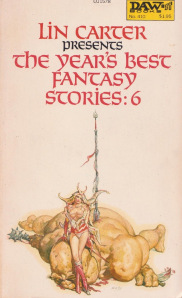 Something about this seems backwards to me. Editors should be looking for writers who have something to say—writers who aren’t interested in jumping through editorial hoops, but who are far more interested in PURSUING THEIR OWN CREATIVE VISION and creating something unique, original, and separate from whatever else is out there.
Something about this seems backwards to me. Editors should be looking for writers who have something to say—writers who aren’t interested in jumping through editorial hoops, but who are far more interested in PURSUING THEIR OWN CREATIVE VISION and creating something unique, original, and separate from whatever else is out there.
Writers today have to make a choice: Write exactly what you WANT to write, or write what this-or-that editor will respond to (and therefore publish). Of course, today writers have the option of self-publishing, which doesn’t have the stigma that it used to. However, if you’re seeking to get paid for your work and get it out to as many readers as possible, you really need to get it into an established venue (magazine/anthology/website). Which means finding a compromise between your artistic vision and the editor’s editorial vision.
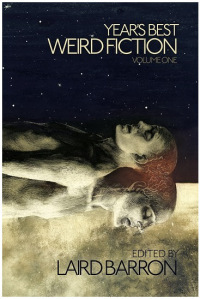 Instead of setting up a set of parameters that writers MUST meet, editors should be casting a wide net, looking for diverse voices and sensibilities, opening their doors and minds to creative visions that don’t simply fill a well-designed niche. Nobody wants to read the same kinds of stories over and over. Yet editors often end up BUYING the same kinds of stories over and over.
Instead of setting up a set of parameters that writers MUST meet, editors should be casting a wide net, looking for diverse voices and sensibilities, opening their doors and minds to creative visions that don’t simply fill a well-designed niche. Nobody wants to read the same kinds of stories over and over. Yet editors often end up BUYING the same kinds of stories over and over.
Traditional wisdom has been: “Read our publication and get familiar with it so you know what we are looking for.” In reality it should be the other way around: Writers should be pursuing their muses WHEREVER IT TAKES them and in WHATEVER STYLE THEY FEEL BEST SUITS THEIR STORIES. A writer’s vision can vary from story to story. A publications’ “editorial vision” rarely changes, but instead becomes a monolithic hurdle that writers must learn to climb or jump over to avoid being crushed.
In short: Editors shouldn’t be telling writers what to write.
But they often do.
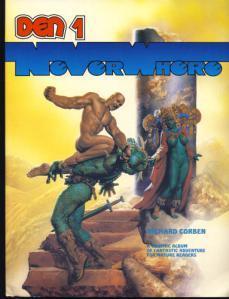 I’m sure many editors reading this post will say “Hey, man, feel free to take your creative vision elsewhere if you don’t want to write what we publish.” And many writers are doing that, and will continue to do so. Sometimes you HAVE to.
I’m sure many editors reading this post will say “Hey, man, feel free to take your creative vision elsewhere if you don’t want to write what we publish.” And many writers are doing that, and will continue to do so. Sometimes you HAVE to.
But where are the editors who put the writer’s vision first? Do they even exist in today’s market? Have they ever?
All of this doesn’t apply to famous writers with massive followings (your Stephen Kings, George R.R. Martins, J.K. Rowlings, etc.). Those writers can write ANYTHING they want, and ANY editor will be glad to have it—regardless of how well it fits with the magazine’s “editorial vision.” Why? Because those writers’ work SELLS. It’s a proven commodity.
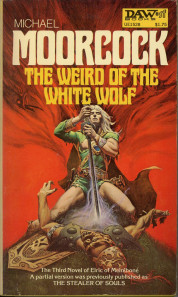 So how did those mega-writers get where they are? Was it by trying to please every editor’s unique vision for what fiction should or should not be? Or was it by blazing new trails with their work, ignoring what people were telling them to write, and instead following their own dreams? I propose that it’s always the latter that makes a writer stand out from the pack and break through into mega-popularity.
So how did those mega-writers get where they are? Was it by trying to please every editor’s unique vision for what fiction should or should not be? Or was it by blazing new trails with their work, ignoring what people were telling them to write, and instead following their own dreams? I propose that it’s always the latter that makes a writer stand out from the pack and break through into mega-popularity.
When a writer’s personal vision comes through so clean and clear that thousands or even millions of people respond to it, that writer becomes his own “editorial vision.” Other writers start imitating it—not because they are trying to steal that person’s readership, but because they are inspired as hell by these super-successful writers and their work: Creative accomplishments that set out not to fulfill some editor’s personal taste, but to please the writer’s own sense of aesthetic quality. We see this across the board in the Arts, whether it be music, film-making, painting, or fiction writing.
 The point is: Writers need to pursue their own visions. If you can find an editor who shares your vision, or who appreciates yours enough to incorporate it into his/her own vision, then so much the better. This is how non-famous writers find a “home” for their fiction—not a temporary roadside hotel, but a palatial estate where every story finds a readership. Every writer I know has venues where their work is welcome, and other venues where they can’t get published at all. It’s all part of the game when Art becomes a Commodity.
The point is: Writers need to pursue their own visions. If you can find an editor who shares your vision, or who appreciates yours enough to incorporate it into his/her own vision, then so much the better. This is how non-famous writers find a “home” for their fiction—not a temporary roadside hotel, but a palatial estate where every story finds a readership. Every writer I know has venues where their work is welcome, and other venues where they can’t get published at all. It’s all part of the game when Art becomes a Commodity.
Editorial vision is necessary because it gives editors and publications a mission statement. But too often editorial vision becomes exclusionary, and too many writers are kept out of the garden by these well-meaning gatekeepers.
 Writers should follow their own visions, not anyone else’s. E
ditors should be looking for writers with something unique to say, and those who say it in their own way.
Writers should follow their own visions, not anyone else’s. E
ditors should be looking for writers with something unique to say, and those who say it in their own way.
Editorial vision, when it becomes a barrier to new voices, can be a handicap. It should be a tool, a set of guidelines for what defines a publication, not a one-size-fits-all checklist with no room for growth, metamorphosis, or challenges.
The greatest of artists (including writers) are always those who don’t fit into ANYONE ELSE’S vision but their own. They are the ones who pursue their private Holy Grails, blaze new trails, and do something that pleases themselves first and foremost. If you can’t please yourself, then what’s the point?
 If you’re a writer, ask yourself: “Who am I writing for? Editors or readers? Or myself?”
If you’re a writer, ask yourself: “Who am I writing for? Editors or readers? Or myself?”
If you’re an editor, the question is: “Are my editorial sensibilities too narrow? Am I taking chances on new voices and fresh ideas, or am I stifling the creativity of others so that it fits my own personal vision?”
Should fiction be crafted to fit a pre-conceived notion of what is acceptable? Or should it be kicking down doors, knocking over mailboxes, and subverting the principles of what has come before in a never-ending quest for the new, the fresh, and the original?
 There’s ART and there’s COMMERCE. Which do YOU stand for? What’s more important to you—selling your work or doing the work that your soul demands of you?
There’s ART and there’s COMMERCE. Which do YOU stand for? What’s more important to you—selling your work or doing the work that your soul demands of you?
Writers New and Old: Are you going to follow your dream or let someone else define it for you?
Whatever you decide, you’ve got to live with it.
Go forth and CREATE.
Follow that muse wherever it takes you.
______________________________
“Good writing is like water. It seeps through the cracks
in the barriers placed in front of it.”
– Darrell Schweitzer
“I did it for the pure joy of the thing.
And if you can do it for joy, you can do it forever.”
– Stephen King
“So write your story as it needs to be written.
Write it honestly, and tell it as best you can.
I’m not sure that there are any other rules.
Not ones that matter.”
– Neil Gaiman


November 11, 2014
We Are Eternal…
November 1, 2014
COSMIC RAMBLINGS I: Complex Creatures
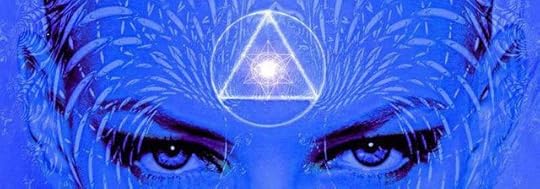 Recently I finished reading actor Ron Perlman‘s excellent memoir EASY STREET (THE HARD WAY), a book so fascinating and insightful it sparked several ephiphanies. Ron’s book isn’t just the story of an actor’s roller-coaster career over four decades. It’s just as much about Ron’s inner journey as a human being—a slow and painful process of learning to accept himself without any outside approval. This problem is common to those with what is often called “the artistic temperament.”
Recently I finished reading actor Ron Perlman‘s excellent memoir EASY STREET (THE HARD WAY), a book so fascinating and insightful it sparked several ephiphanies. Ron’s book isn’t just the story of an actor’s roller-coaster career over four decades. It’s just as much about Ron’s inner journey as a human being—a slow and painful process of learning to accept himself without any outside approval. This problem is common to those with what is often called “the artistic temperament.”
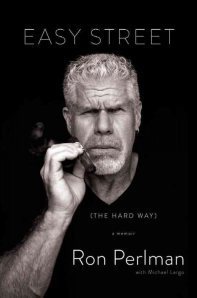 Something I’ve realized, thanks to The Perl’s book, is how much this makes sense. Consider what Art truly is: An escape from mundane reality that increases our ability to appreciate that reality and often helps to define (or redefine) the lives of those who experience it. For some of us, an unhappiness with ourselves can be replaced with immersion in the imagino-sphere of Art itself. Ron talks in his book about getting into the drama program in high school almost accidentally because he wasn’t that good on the swim team. As soon as he discovered the thrill of delivering lines on the stage and getting that blessed audience response, he was hooked for life.
Something I’ve realized, thanks to The Perl’s book, is how much this makes sense. Consider what Art truly is: An escape from mundane reality that increases our ability to appreciate that reality and often helps to define (or redefine) the lives of those who experience it. For some of us, an unhappiness with ourselves can be replaced with immersion in the imagino-sphere of Art itself. Ron talks in his book about getting into the drama program in high school almost accidentally because he wasn’t that good on the swim team. As soon as he discovered the thrill of delivering lines on the stage and getting that blessed audience response, he was hooked for life.
Man, do I get this. I grew up with low self-esteem like a lot of writers do. Hell, a lot of people in general have low self-esteem issues. They can plague you your whole life if you don’t eventually face up to and wrestle down those inner demons. The Perl pointed out how so many talented artists in music, drama, and other fields end up being consumed by those demons. It’s obvious from looking at case after case of overdoses, suicides, and tragedies that escaping into the world of Art can be a way of soothing that inner pain. But it never lasts because eventually the show is over, the book ends, or what-have-you, and you have to come back “down to earth.” So many artistic folks turn to drugs at this point to extend that high, but any performer will tell you that drugs can NEVER reproduce the high you get from an appreciative and grateful audience response. It feels good when people cheer for you.

The first comic book I ever remember reading–before I could actually read, that is. I got the story from John Buscema’s amazing pictures. It was a pivotal moment and the beginning of my life-long love of comics.
What transformed my life in my early 20s (i.e. the early 90s) was music. I grew up reading comics and fantasy/horror/sci-fi fiction. As a pre-teen all I ever wanted to be was a comic book artist, an unlikely goal for a kid from Eastern Kentucky (and boy did everybody let me know it). It wasn’t exactly an environment that encouraged you to “pursue the arts”—it was more about “get a job.” I grew up in a very down-to-earth environment full of loving but practical people. The only artists in my immediate family were my grandfather, who played guitar and banjo, and his son (my Uncle Johnny) who also played country-style guitar. I used to stay with my grandparents every summer, at least a month or two every year.
Once or twice a week my grandfather would get out his old, battered acoustic guitar with the strings that smelled like oiled bronze. He’d play and sing Hank Williams and Jerry Lee Lewis tunes on the porch. His only audience was my grandmother and us grandkids—later I realized he was too shy to perform for anybody else. My grandfather and uncle were working men, so Art for them wasn’t something serious to pay the bills. They had “real” jobs for that.
I got my first guitar at 15 when I was a sophomore in high school. I was a bona fide MetalHead, and I taught myself to play by listening to records and jamming with friends. Music got me through the living Hell that was the first three years of high school. My first band, Badly Bent, played one show and broke up. Most of us went off to college, where I studied creative writing and started submitting stories to WEIRD TALES.

My writing instructors at U of K were very down-to-earth literary guys. I learned a lot from them, but I learned more about fantasy and science fiction from Robert Silverberg thanks to this book. Not only does it take you through a history of The Great Sci-Fi Writers, it analyzes their stories to illuminate a set of principles essential for writers to master. I read lots of how-to-write books, but this one was The King. Thank you, Bob.
Robert Silverberg’s WORLDS OF WONDER was my new Bible for awhile, and the precious rejection feedback from WT’s Darrell Schweitzer set me on a path to getting my writing up to professional standards. I wrote an entire post-apocalyptic novel while I was going to college—in longhand script that filled five spiral-bound notebooks. It wasn’t very good, but I was happy to complete a novel-length story.
Music and Writing have always been parallel forces in my life. After graduating from the University of Kentucky in ’91, I formed Wild Love Rebellion with a fellow unemployed college graduate. We had come out of the higher education system at the peak of a massive recession and the job market was shit at the time.
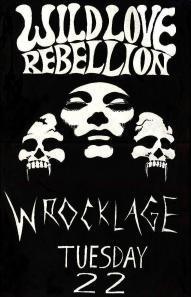
One of many flyers I designed and distributed for my band in the early 90s, mostly on the telephone poles of Lexington, KY. I used to recreate art from old 70s issues of HEAVY METAL, but this one was inspired by a Jim Starlin panel in an old WARLOCK comic. This particular flyer was an acknowledged high point that represents the band’s last phase, when we finally had perfected our sound–right before we self-destructed. Ain’t rock’n’roll grand?
We were part of an entire generation that said “Fuck this, I’m gonna form a band and make music.” So the music dream consumed my life for the next three years or so. Wild Love Rebellion called itself “love punk” but evolved into “psychedelic hard rock.” We hated the terms “grunge” and “metal” but we had a heavy dose of each in our DNA. Man, we had some good times. There’s nothing like making loud-ass music when you’re young and pissed off at the world.
While Wild Love Rebellion played the same three clubs in Lexington, KY, for three wild years, a guy named Brian Warner was playing clubs around Florida fronting a band called Marilyn Manson and the Spooky Kids. Brian grew up in Ohio (just north of my home state) and graduated from high school the same year as my friends and I (’87). His band went on to fame and fortune in ’94 with the classic “Portrait of an American Family,” while Wild Love Rebellion imploded before we could even release our debut album. And that’s the way rock’n’roll goes.
I played in a couple other bands after the death of Wild Love, but I also came back to writing. After moving to Chicago and going through a divorce a few years later, I got even more serious about writing. Remember what I said about Art as an antidote to inner pain? I see it now, clearly, since hindsight is always 20/20. All my life I’ve immersed myself in the world of Art—from the time I was 10 years old drawing Master of Kung Fu comics at my grandparents’ dinner table, to the blazing guitar solos and pyschedelic thunder of Wild Love Rebellion, and back to my ultimate calling as a storyteller.
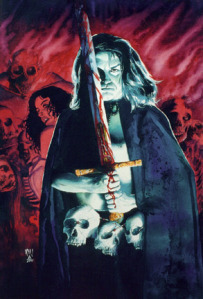
Ken Meyer, Jr.’s terrific cover for the first issue of my self-published comic NECROMANCY: A DARK ROMANCE. This dates back to the year 2000. Damn, that was 14 years ago!
I moved to California and for two years labored with pencil and inks to create a self-published graphic novel NECROMANCY, which years later I revised into an online comic called SKULLS (published at BlackGate.com). But after that experience—which was invaluable—I realized I was primarily a Writer, and I’d never be a professional comics artist. If I had focused on my comics art skills since I was 9 years old, I’d have been pretty damn good. But I had given that dream up at the age of 15 and replaced it with an electric guitar.
Ten years I worked on breaking into comics. I started hitting the San Diego Comicon every year. I constantly networked with potential artists between long shifts at my Day Job (editing trade magazines). I had no budget for hiring artists, so I got nowhere. I decided to draw PRIMORDIA (my follow-up to NECROMANCY) myself, but gave up after 8 pages or so—losing a Day Job in ’02 didn’t help. However, I did hit a jackpot of artistic success when I teamed up with the mighty Roel Wielinga, whose Sirius comic THE SEVENTH SYSTEM was an indie favorite of mine.

Roel’s amazing wrap-around cover for the PRIMORDIA hardcover collection.
Roel and I worked on PRIMORDIA for a year solid and completed the 96-page graphic novel. “We’ll get it published SOMEHOW,” was our only mantra. After a few aborted starts, Archaia Comics’ Mark Smylie jumped at the chance to bring PRIMORDIA into the Archaia family. And he hired Joel Chua to color it—a genius move that trumped the original vision of a black-and-white novel. Did I mention Mark Smylie is a genius?
Success with PRIMORDIA led me to a couple of script-writing gigs for the great Mark Waid, who was editing for Boom! Studios at the time. I wrote 8-pagers for CTHULHU TALES and ZOMBIE TALES, which was a hellva lotta fun. I was working with Mark friggin’ Waid! “We’ll do more of these,” Mark told me in San Diego. I was psyched. And wouldn’t you know it, things fell apart once again. To paraphrase what Ron Perlman was saying about his own career, every step forward seemed to be followed by two steps back.
Mark Waid left Boom! Studios and both books were cancelled. Then the Great Recession of 2008 hit like a ton of bricks–Wall Street and Big Banking had almost destroyed our economy. Jobs were lost in the hundreds of thousands. I was so very lucky to have a full-time teaching position in Sunnyvale, CA, during that time. Everybody was afraid of getting laid off, and the comics industry seemed to “close ranks”–all the established writers were scrambling for assignments. It became ten times harder for a relatively unknown, up-and-coming comics writer to get any attention at all.
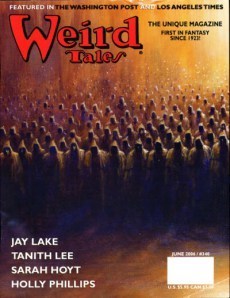
The cover of WEIRD TALES #340, which published my first professional sale “The Persecution of Artifice the Quill,” and began the Zang Cycle of stories. The cover evokes the faceless Vizarchs who drag Artifice toward execution in the story.
All this time I had been publishing fantasy short stories in WEIRD TALES and BLACK GATE. I saw my writing career as a two-pronged approach: comics and fiction. But comics had dried up and it was time to make the next leap. Time for me to write my Big Fantasy Novel. I had completed a cycle of 12 interrelated tales (the Zang Cycle, now collected in THE REVELATIONS OF ZANG), but that wasn’t a novel. I decided “Fuck comics, I’ll write a novel.” Yeah, it was that easy. Not.
The first version of my Big Fantasy Novel got no response from agents, although I shopped it around for three years. Finally, I joined the Scribes workshop in San Jose and started getting feedback from the early chapters. Immediately I realized what was wrong with my first attempt at the B.F.N. So I moved the story twenty years into the future and wrote ANOTHER Big Fantasy Novel, with everything I had dreamed up before serving as background. This second attempt I decided to call SEVEN PRINCES.

The cover of BLACK GATE #12, which contains my story “Oblivion Is the Sweetest Wine.”
About this time I got to attend my first WORLD FANTASY CONVENTION, when the con came to San Jose. More networking with potential agents got me nothing until my friend Howard Andrew Jones (then Managing Editor of BLACK GATE magazine) referred me to his agent Bob Mecoy. Bob liked the SEVEN PRINCES manuscript enough that he offered to represent me. After three years of wooing every agent in the book with no success, I finally got one! And just in time: Once again my Day Job dried up.
I moved to Napa to start a new job at another school. I would have been crushed that after three years in Sunnyvale they weren’t going to give me permanent status. But I had a muthafuggin’ AGENT now, so I smiled when I realized that my three years at this school amounted to nothing. However, it all worked out for the best as I ended up with a permanent position at a high school in the Napa Valley district.
My first year teaching in Napa, eleven months after finding an agent, he called with news that Orbit Books was offering me a three-book deal. THE BOOKS OF THE SHAPER was finally becoming a reality. SEVEN PRINCES was already written, and I’d write two more to complete the trilogy.
What an experience.
Now the trilogy is all done. Out there.
Winning hearts and minds. And shelves.
 Someone once said that success is more dangerous than failure. I never understood that completely until I read Ron Perlman’s memoir. Artistic success has little to do with personal self-worth. The most important thing an artist can do is learn to accept himself and rise above the stifling need for external validation (from readers, publishers, reviewers, peers, etc.). True happiness, honest peace-of-mind, NEVER comes from outside yourself. Externally driven happiness is fleeting, a cloud dissolving into the ether even as you look at it.
Someone once said that success is more dangerous than failure. I never understood that completely until I read Ron Perlman’s memoir. Artistic success has little to do with personal self-worth. The most important thing an artist can do is learn to accept himself and rise above the stifling need for external validation (from readers, publishers, reviewers, peers, etc.). True happiness, honest peace-of-mind, NEVER comes from outside yourself. Externally driven happiness is fleeting, a cloud dissolving into the ether even as you look at it.
Artists must learn to separate external validation from internal peace. You might say “Well, every person has to do that.” But artists, I believe, have an even harder time with it because they have such an intimate relationship with Art. It often defines them to the point where they are “nothing without it.” This explains why great talented artists sometimes completely abandon their artistic careers to embrace a simpler lifestyle, and why ALL artists contemplate the abandoning of their trade from time to time.
I used to tell my ex-wife: “I wish I wasn’t creative and had no ideas because I’d be happier as a dumb brute.” She didn’t agree, and she was probably right. I cannot separate my Creativity from my Self, and I quit trying to do so a long time ago. They say if you love something you should set it free. If it comes back to you, it’s yours. If it doesn’t, it was never yours to begin with. The same rule applies, whether you’re talking bout a love affair or an art form.
Humans are complex creatures. Artists, I’ve observed, are even more complex. They usually have some kind of inner conflict that expresses itself artistically. A demon that drives them, or several demons. Art can be therapy, but it can also be an addiction. An artist can never let his Art define him. Only his Humanity can do that.
 It’s easy to be an artist, but it’s never easy to be a human. That difficulty (whatever form it takes) is what drives people to the sanctuary of Art, where they find balm for a wounded soul.
It’s easy to be an artist, but it’s never easy to be a human. That difficulty (whatever form it takes) is what drives people to the sanctuary of Art, where they find balm for a wounded soul.
The most important Art of all is the Art of Living. We craft our own lives to a set of aesthetic principles. Or let them be sculpted by forces beyond our control. Or perhaps a little of both.
The trick is to look inward for peace and security, never out to the inconstant and fickle world.
Look inward with meditation, with music, with silent contemplation.
The only approval you need is your own.
Peace.


October 28, 2014
Welcome to the CARNIVAL OF SOULS
HAPPY HALLOWEEN! One of my all-time favorite horror movies, the compelling and disturbing CARNIVAL OF SOULS (1962), is now available for FREE viewing thanks to the magic of YouTube. If you haven’t seen it yet, sit back, turn down the lights, spark some candles, lock your door, and get ready to get SKEERED.





